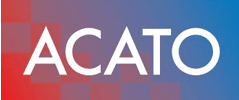How to prepare for a digital school
It is good that many schools no longer use chalk. It protects the environment and reduces health risks for students and teachers. However, the introduction of electronic school boards and digital learning content creates completely different problems. Not every teacher has acquired the necessary skills during their training or years of work to work competently with these new electronic media. The age of the digital school can no longer be averted. Some teachers are opting for early retirement. With the right training, even older teachers can have a lot of fun using digital media in their lessons.
Digital School with a Future

Anyone who has ever had spherical trigonometry at school will remember some teachers who tried to explain this topic in a creative way. It is really difficult to understand. Some teachers painted a balloon to explain trigonometry to the students. With the help of the digital board, this subject can now be shown in 3D. Teachers and students still need a user-friendly learning environment.
The digital school also allows the older students to work with a tablet or notebook at school. In order for this to work safely, students must be given secure access to the school network. To ensure that everyone can use this new service without problems or conflicts, some basic rules must be established. These basic rules must be adapted to the ISO 27001 standard for the digital school.
Information security is very important so that children can find their way safely in the digital learning environment. Teachers must act as role models for their classes. But they can only do this if they are given the necessary knowledge and skills.
Designing digital learning environments for children
Each school age needs a different learning environment. Can this really be designed separately from primary school to middle school to high school? Actually, it’s more about the learning content. Teachers need an easy-to-use environment to incorporate digital content into lessons for younger students. Especially at college level, girls and boys struggle with digital media just as much. If the digital world is not standard in the family environment, young adults have significantly more difficulty completing their group work. But with hard work, you can also learn the digital working world.

Equipment and network technology
The technical equipment of a traditional school is usually based on old concepts from the 1980s. Today, lessons in digital schools are taught using a variety of means. These include traditional textbooks and informative posters on the wall. However, digital projectors and digital boards also make it possible to show videos and images. 3D projections in particular, which can be rotated and turned to look like a globe or other object, make it easier for teachers to convey a topic more quickly and clearly. Since many schools are still located in very old buildings, thick walls or missing cable ducts can hinder digitization. A WLAN system can also help here, but thick walls can lead to many reception problems. In contrast, an Ethernet-over-Power system offers a low-radiation networking method for school buildings. The network data is transported via the sockets in the building. The data can only be accessed with the help of the power to LAN converter, as the information travels encrypted.
Digital teaching content for the digital school
Since teachers cannot create millions of PowerPoint presentations for daily lessons, they need ready-made materials. One example is the multilingual teaching material from EduExpert. The Polish company creates interactive teaching materials for schools (primary school to high school or K12) in Europe. The content enables teachers to explain complex topics and even allows students to interact with the teaching materials. This ensures that attention is maintained even in digital school. A particular advantage is that students can also learn from home if their health does not allow them to attend school.
